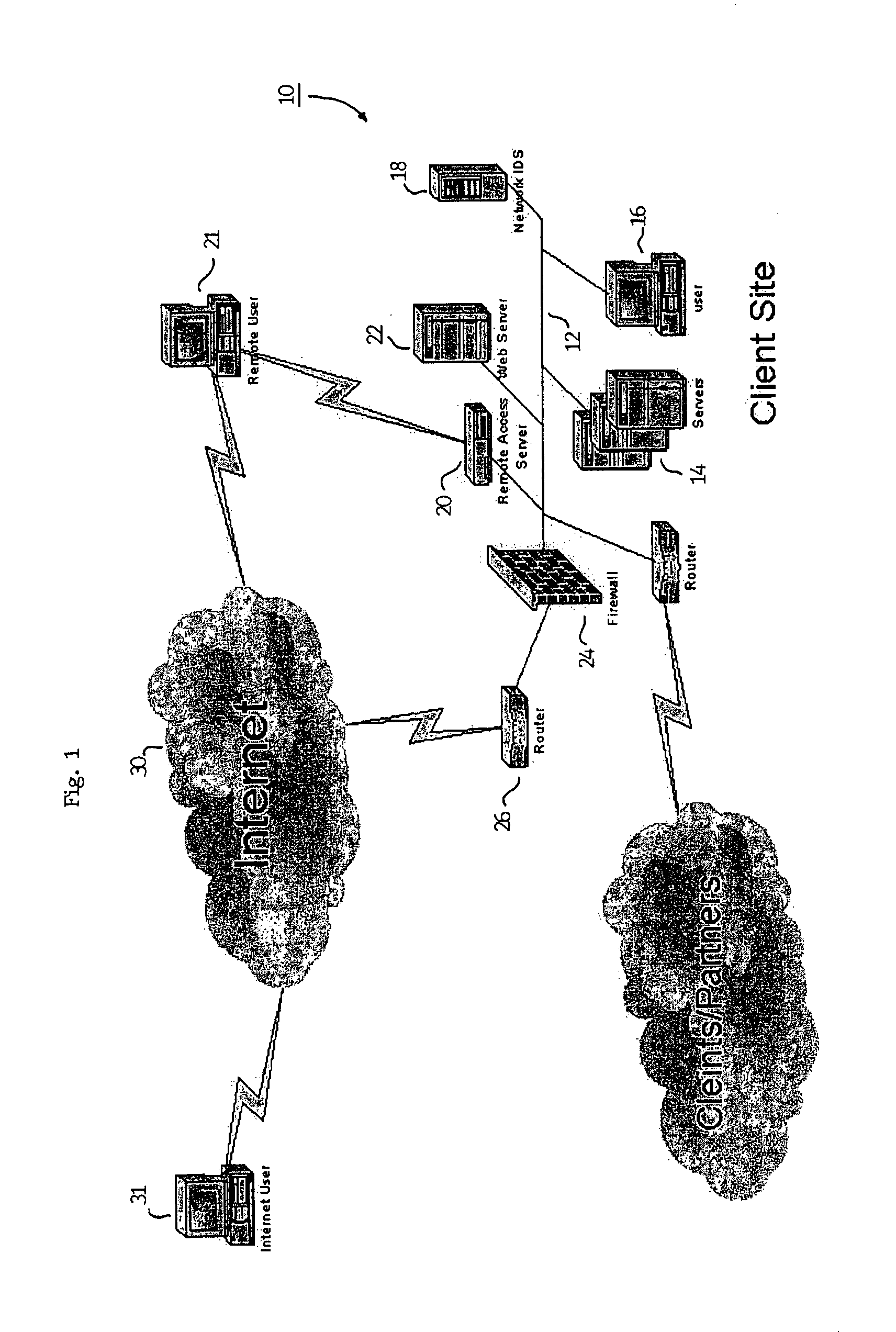Method and apparatus for verifying the integrity and security of computer networks and implementing counter measures
a computer network and integrity verification technology, applied in the field of methods, can solve the problems of global security patchwork, intrusion detection and global security patchwork, and the topology of the interconnected network has grown increasingly complex, and achieve the effect of thwarting suspected intruder attacks on the target network and reducing the number of false alarms
- Summary
- Abstract
- Description
- Claims
- Application Information
AI Technical Summary
Benefits of technology
Problems solved by technology
Method used
Image
Examples
Embodiment Construction
[0038]The preferred embodiments of a network security system according to the present invention will hereinafter be described with reference to the accompanying drawings.
[0039]Referring to FIG. 2, a first embodiment of the present invention is shown. Target network 100 is shown having the same basic components as the network of the prior art shown in FIG. 1 with the addition of security subsystem 50, however, it should be noted that the actual configuration of the target network is not critical with the exception of at least one security subsystem 50. Each of the security subsystem 50, servers 14, workstations 16, IDS 18, remote access server 20, web server 22, firewall 24 and router 26 are connected together over network backbone 12. Each of the devices carry out communication over the backbone in accordance with a predetermined communication protocol such as Transmission Control Protocol / Internet Protocol (TCP / IP). Security subsystem 50, firewall 24, IDS 18, and all servers, route...
PUM
 Login to View More
Login to View More Abstract
Description
Claims
Application Information
 Login to View More
Login to View More - R&D
- Intellectual Property
- Life Sciences
- Materials
- Tech Scout
- Unparalleled Data Quality
- Higher Quality Content
- 60% Fewer Hallucinations
Browse by: Latest US Patents, China's latest patents, Technical Efficacy Thesaurus, Application Domain, Technology Topic, Popular Technical Reports.
© 2025 PatSnap. All rights reserved.Legal|Privacy policy|Modern Slavery Act Transparency Statement|Sitemap|About US| Contact US: help@patsnap.com



